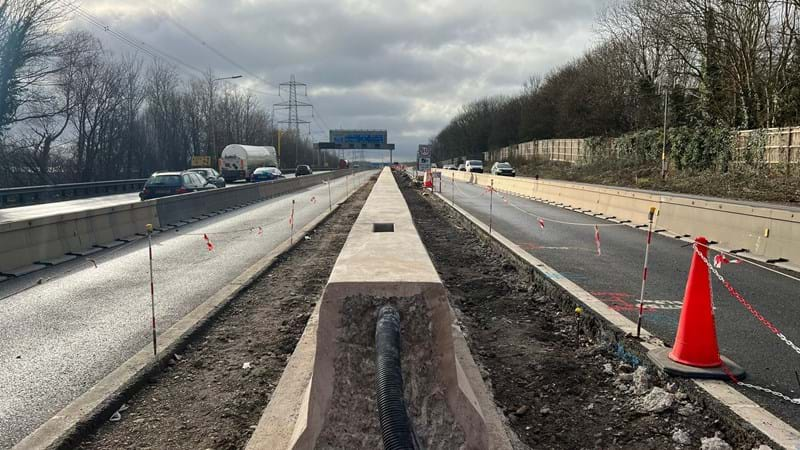Concrete barrier takes shape
Published
09 Mar 2023
Delivering safer roads on the M3 in Hampshire

Share this article
You may have seen us working between junctions 9 (for Winchester) and junction 14 (for the M27) of the M3 in Hampshire and wondered what we’re doing.
We’re working in the central reservation installing a much safer concrete barrier along this ten-mile stretch.
We’ve recently completed all the foundation and drainage work between junctions 14 and 13 which is where the first new sections of concrete have started going in.
How is it made?
Each section is laid as we go along using a machine called a slipform paver.
The wet concrete gets poured onto a conveyor belt which feeds the mixture through a special mould. This mould is used to make the drainage section and the barrier itself.
This all happens within our safe working area and means we can keep the same number of lanes open without closing the road to lift large blocks of concrete into the central reservation.
Did you know?
Concrete needs to set at the right temperature. If it’s too cold or wet, it can break or become weak after it has dried. In hot temperatures, moisture can evaporate too quickly and cause the concrete to break.
The weather has a big impact on the work we do, which is why we're not always able to get outside, especially if temperatures are below freezing or if it’s raining too much.
We're also using concrete with a reduced carbon content. This has saved over 61 tonnes of carbon per kilometre compared with traditional mixes.
What are the safety benefits?
Concrete barriers are much stronger and safer than metal ones and significantly reduce the risk of vehicles crossing over from one carriageway to another if there's an accident. They are also virtually maintenance free and will last twice as long as normal metal barriers, with far less need for closures for routine repairs in the future.
You can find out more about the project by visiting our scheme webpage.
